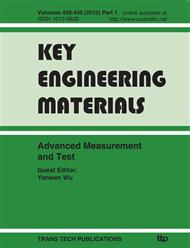p.499
p.505
p.510
p.516
p.522
p.528
p.534
p.540
p.546
Environmental Influence Assessment of Thermal Power Plant Based on Entropy and Fuzzy Optimal Model
Abstract:
The prevention of environmental pollution is an important work and an assessment indicator for thermal power enterprises,it is also the key factor for sustainable development.This paper presents a new qualitative analysis method for thermal power enterprises to analyze its environmental impact. It takes four thermal power units for example, uses entropy method to determine the weight values of indicators, and filter the indicators based on the size of the values. For the characteristic matrix of the remaining evaluation indexes, it uses multi-objective fuzzy optimization model to transform the absolute amount of the indicator values into the relative amount ones, then it calculates the positive ideal distance and negative ideal distance of each evaluation object, and ranks them based on the plus menbership grade maximal principle. The positive analysis result shows that this method has a strong practical significance, it provides a more reliable evaluation method for environmental protectors.
Info:
Periodical:
Pages:
522-527
Citation:
Online since:
June 2010
Authors:
Price:
Сopyright:
© 2010 Trans Tech Publications Ltd. All Rights Reserved
Share:
Citation:


